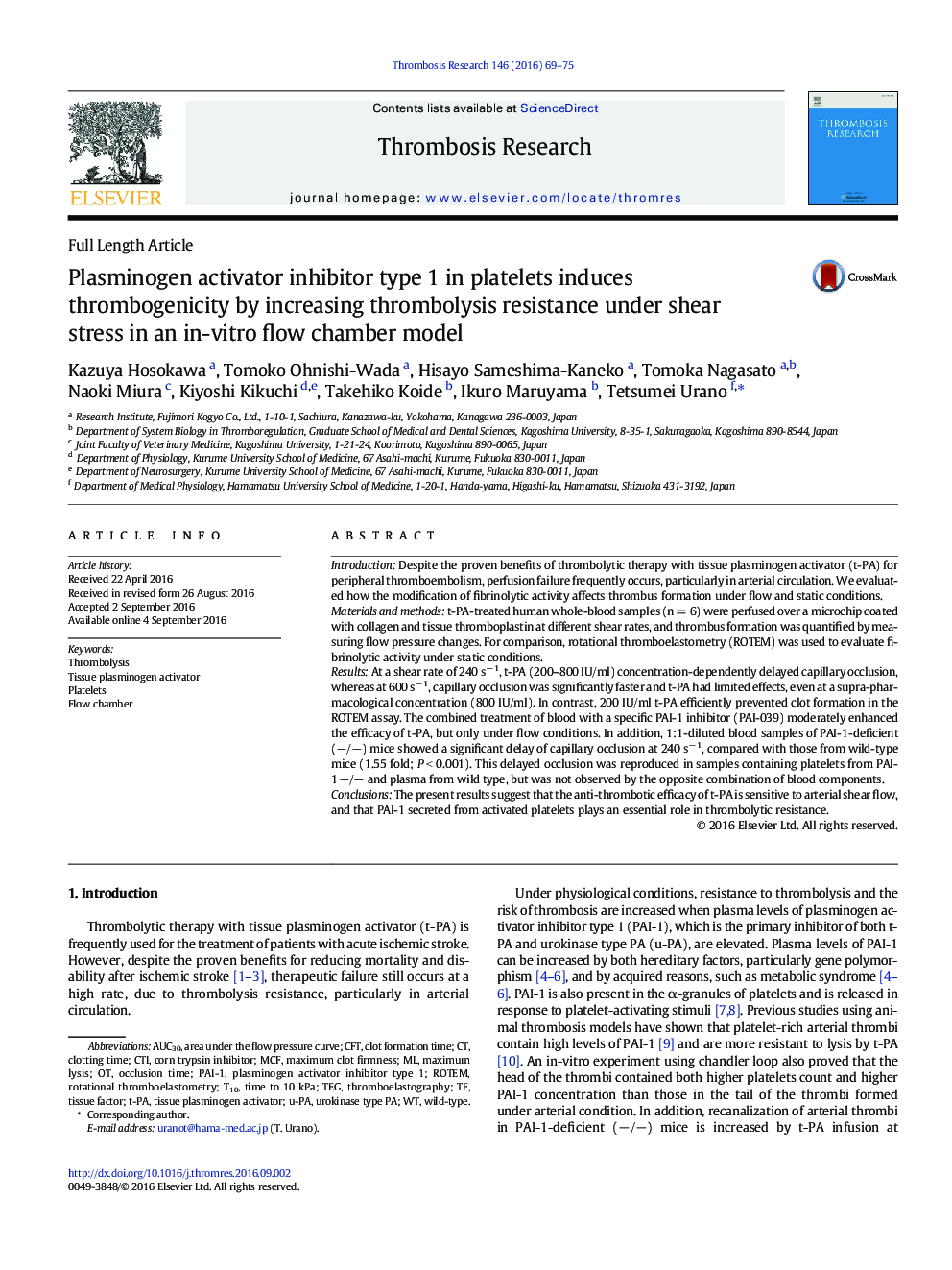| Article ID | Journal | Published Year | Pages | File Type |
|---|---|---|---|---|
| 6000346 | Thrombosis Research | 2016 | 7 Pages |
â¢Shear rate largely modified thrombolytic efficacy of t-PA.â¢PAI-1 inhibitor enhanced the thrombolytic efficacy of t-PA under arterial shear rate.â¢PAI-1 secreted from platelets appeared to potently regulate arterial thrombolysis.
IntroductionDespite the proven benefits of thrombolytic therapy with tissue plasminogen activator (t-PA) for peripheral thromboembolism, perfusion failure frequently occurs, particularly in arterial circulation. We evaluated how the modification of fibrinolytic activity affects thrombus formation under flow and static conditions.Materials and methodst-PA-treated human whole-blood samples (n = 6) were perfused over a microchip coated with collagen and tissue thromboplastin at different shear rates, and thrombus formation was quantified by measuring flow pressure changes. For comparison, rotational thromboelastometry (ROTEM) was used to evaluate fibrinolytic activity under static conditions.ResultsAt a shear rate of 240 sâ 1, t-PA (200-800 IU/ml) concentration-dependently delayed capillary occlusion, whereas at 600 sâ 1, capillary occlusion was significantly faster and t-PA had limited effects, even at a supra-pharmacological concentration (800 IU/ml). In contrast, 200 IU/ml t-PA efficiently prevented clot formation in the ROTEM assay. The combined treatment of blood with a specific PAI-1 inhibitor (PAI-039) moderately enhanced the efficacy of t-PA, but only under flow conditions. In addition, 1:1-diluted blood samples of PAI-1-deficient (â/â) mice showed a significant delay of capillary occlusion at 240 sâ 1, compared with those from wild-type mice (1.55 fold; P < 0.001). This delayed occlusion was reproduced in samples containing platelets from PAI-1 â/â and plasma from wild type, but was not observed by the opposite combination of blood components.ConclusionsThe present results suggest that the anti-thrombotic efficacy of t-PA is sensitive to arterial shear flow, and that PAI-1 secreted from activated platelets plays an essential role in thrombolytic resistance.
